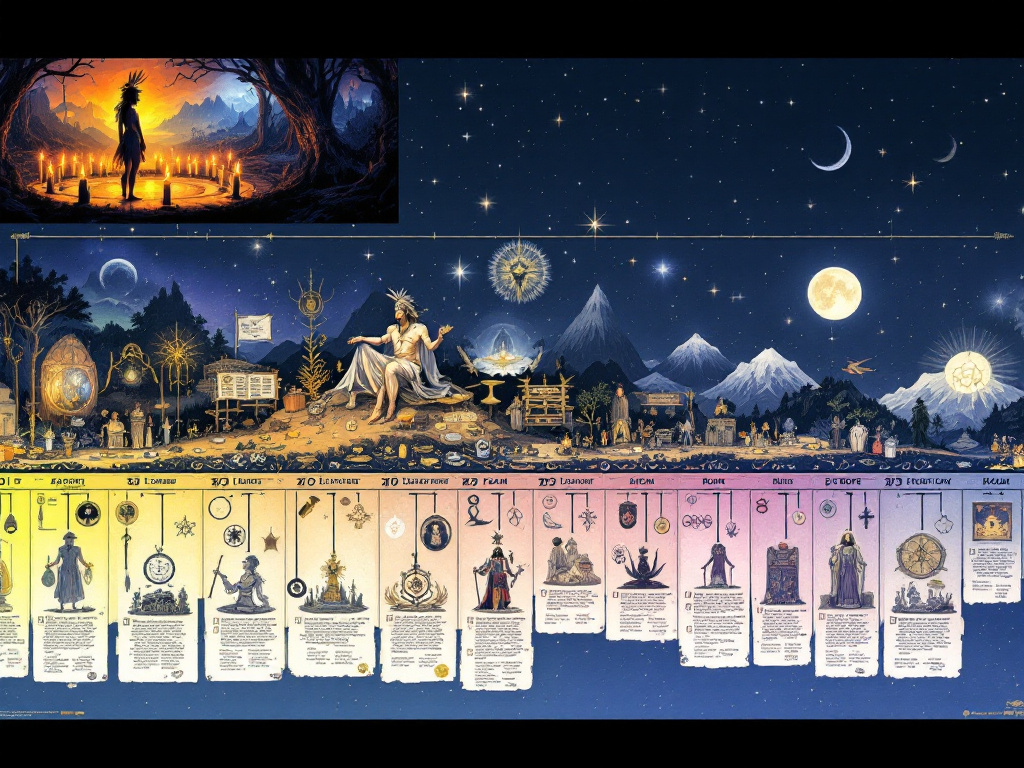Witchcraft and magic are two concepts often confused, yet they have profound historical and cultural differences. While magic encompasses a broader range of occult practices, witchcraft has evolved over the centuries through fear, persecution, and rediscovery. Today, movements like Wicca reclaim the legacy of witchcraft, reinterpreting it in a spiritual and positive way. But how did we get here?
The Origins of Magic
Magic has been present in human cultures since ancient times. The earliest evidence dates back to shamanic rituals, Babylonian spells, and Egyptian formulas used to communicate with gods or ward off evil spirits. In Ancient Greece and Rome, magic was both practiced (such as theurgy) and feared, with laws banning certain forms of enchantment.
Witchcraft in the Middle Ages
With the rise of Christianity, witchcraft began to be seen as a form of heresy. During the Middle Ages, the Church condemned any unauthorized magic, associating it with satanic practices. Between the 15th and 17th centuries, the Inquisition and secular courts fueled the witch hunts, condemning thousands—mostly women—accused of casting curses and making pacts with the devil.
Enlightenment and the Decline of Persecution
With the Enlightenment, reason replaced superstition, and persecutions diminished. Witchcraft was relegated to folklore, but magic continued in other forms, such as 19th-century occultism, with figures like Aleister Crowley and the Hermetic Order of the Golden Dawn, which revitalized interest in mysticism.
The Rebirth of Witchcraft: Wicca
In the 20th century, witchcraft was rediscovered in a spiritual context thanks to Gerald Gardner, who in the 1950s founded Wicca, a neopagan movement based on nature worship, the duality of the divine (God and Goddess), and magical rituals. Unlike historical witchcraft, Wicca is not associated with malevolence but is considered a modern religion with ancient roots.
Fundamental Differences
Key Figures in Magic and Witchcraft
Throughout history, various figures have left their mark on the world of magic, occultism, and witchcraft. Some notable examples:
Merlin (Arthurian mythology): Though legendary, Merlin is one of the most iconic magicians in history.
John Dee (1527-1609): Astrologer and occultist of Queen Elizabeth I’s court, developed a system of communication with angels known as Enochian magic.
Aleister Crowley (1875-1947): Founder of Thelema, an esoteric philosophy that influenced modern occultism.
Gerald Gardner (1884-1964): Founder of modern Wicca, he helped legitimize witchcraft as a spiritual movement.
Sybil Leek (1917-1982): One of the most famous modern witches, author of numerous books on witchcraft and magic.
Witchcraft and Magic Today
Today, magic appears in many forms, from esoteric practices to neopagan movements. Wicca has grown into a recognized religion in several countries, with a global community celebrating seasonal rites and following ethical principles based on harmony with nature.
Conclusion
From medieval fear to modern spirituality, witchcraft has undergone centuries of transformation. Once synonymous with heresy and malevolence, today it represents a connection with nature and personal exploration. Magic, meanwhile, continues to exist in various forms, proving that fascination with the unseen is an intrinsic part of humanity.








Leave a Comment